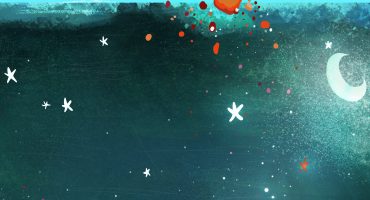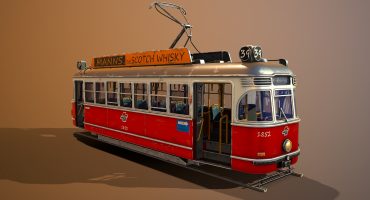About Me
Hey! My name is Océane Forêt and I’m a 3D environment artist from Lyon in France. I just graduated a few months ago from the Emile Cohl school where I studied 3D—from the concept to post-processing—in all its forms, whether for video games, films or any other support. This training gave me a fairly broad vision of what 3D could be.
Before that, I really had no experience with 3D art, so it was interesting for me to see all this. It allowed me to determine more precisely which jobs I wanted to do.
So I am a very young graduate and it was important for me to fill my portfolio with personal work and projects that represent me.
Inspiration
I have always been attracted by stylized 3D creations, even long before I was able to make them myself. I like to find the drawing side in 3D and it is therefore quite naturally that I started to reproduce concepts of 2D artists in 3D.
I think it is a good exercise; it allows me to insert myself into a production pipeline as one would in most studios that make 3D, where the modeler must follow an artistic direction and give life to the concept by making them go from 2D to 3D.
Thus, I got into the habit of saving a lot of images with more or less ambitious concepts with the plan to realize them later. I noticed Bangzheng Du’s work very early on; his concepts are full of details and life, which is what I liked.
So I chose a Bangzheng Du concept to make in 3D.
The Pharaoh Lobster Tempura retained my attention because I love Egyptian mythology and I had never done modeling in this universe before.
Modeling
I use Maya for my modeling. I first started by putting the original concept on a plan in Maya so that I could use it as a reference.
I start by block modeling. For me, it’s the most important step because if your proportions are not correct at that time, they never will be. Spending a little time doing block modeling is important to save time later.
Once I had finished this, I was able to begin to carry out the details.
I started from the simple shapes that I had created and I added everything I saw on my reference.
For the front of the building, it was quite easy. I just had to reproduce what I saw on my reference.
For the back, which took longer than the front, I also had to do some creative work. I had to think about which elements I should add and make sure they fit well with the rest of the scene. I sometimes used elements present on the front of the building, either as-is or slightly modified.
But I couldn’t limit myself to that, which is why many of the elements of the diorama evolved until the end. I really wanted the back of the building to appear as lively and detailed as the front, because that’s why I chose the concept.
I really wanted to add details everywhere, even in places that you wouldn’t necessarily see at first glance.
Texturing
Once I was rather satisfied with the base I had, I started to unfold the UVs and textured my elements.
I decided not to put all the elements on the same UV. That meant that I had a lot of textures, but I felt freer in my texturing and I was more comfortable when painting like this.
I made all the textures in Photoshop, and I tried to reproduce as best as possible the painted and 2D aspects that were in the concept.
I integrated shadows and reflections directly on to my textures. I think the paint was the part that took me the most time because I am not a very good designer. Modeling is quite natural for me, but painting is less so. Nevertheless, I find it important to be confronted with techniques on which I have less skill. I think it’s necessary to deal with tasks outside of my comfort zone.
Sketchfab
I wanted my model to keep its “illustrated look” in Sketchfab, so I opted to put the render in classic mode rather than PBR; I find that it better matches the illustrated renderings. But I decided to keep the shadows anyway.
I never know in advance exactly what settings I’m going to use. I like to try everything. Sketchfab offers a lot of possibilities and I like to test them all regularly. Sometimes, by doing this, I discover that a certain setting that I would not have thought of works well. It is an important moment where you have to highlight your work.











